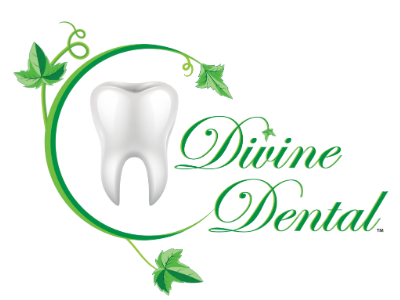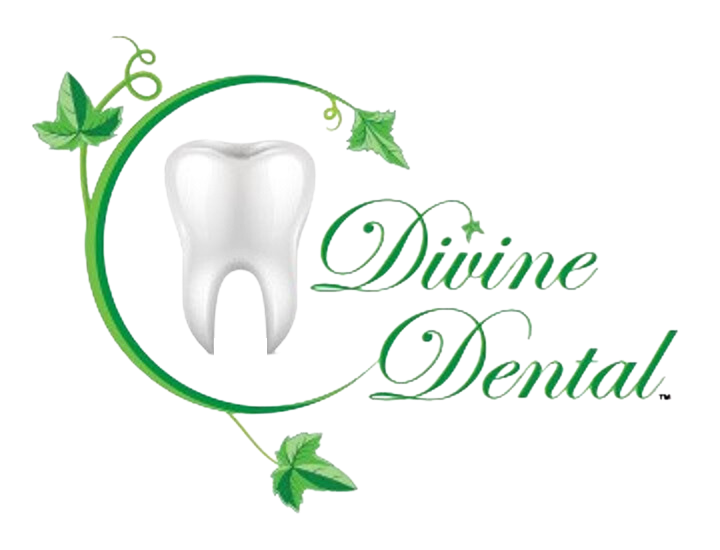Navigating Dental Insurance: Strategies to Ensure You Get the Most Out of Your Plan
Navigating the intricacies of dental insurance can be as bewildering as it is essential. Dental insurance plans are a crucial component in managing oral health care costs, but it’s not always obvious how to extract the most value from these benefits. With a multitude of insurance providers, tiers of coverage, and policies to understand, policyholders stand before a challenging task: maximizing their benefits while minimizing out-of-pocket expenses.

Understanding the specifics of one’s dental insurance policy is the cornerstone of leveraging its potential. By decoding the terminology and recognizing the extent and limits of coverage, individuals can better anticipate their share of costs. It’s equally important to capitalize on the preventive care measures typically covered by dental insurance plans, which can reduce the likelihood of requiring more extensive and expensive procedures down the line.
When confronting the financial aspects of dental health , employing strategic planning can make a noteworthy difference. Making informed decisions about treatments involves a balance between necessary dental work and what the insurance plan covers. By planning treatments within the parameters of the policy, one can optimize coverage and effectively manage dental health expenses.
Key Takeaways
- Identifying and understanding coverage details can reduce out-of-pocket costs.
- Preventive care covered by insurance can prevent expensive procedures.
- Strategic planning for treatments maximizes insurance benefits and fosters improved oral health.
Understanding Your Dental Insurance Policy
When choosing a dental insurance policy, it is essential to understand the specifics of coverage, deductibles, copayments, and network providers to ensure maximum benefits.
Deciphering Coverage and Maximums
Coverage refers to the dental procedures and treatments that are included under a policy. It typically ranges from preventive care, like cleanings and X-rays, to more complex procedures, such as root canals and orthodontics. The maximums are the highest amount the insurance company will pay for covered services within a specified period, usually a year. Most policies have an annual maximum, after which the patient must bear the full cost of services. Patients should review the summary of benefits to understand what is covered and any limitations that apply.
- Annual Maximum: $1,500 per year
- Preventive Care: Covered 100%
- Basic Procedures: Covered 70%
- Major Procedures: Covered 50%
The Role of Deductibles and Co-Payments
Most dental insurance policies include deductibles and copayments . A deductible is a fixed amount a patient pays out-of-pocket before the insurance coverage kicks in. Once the deductible is met, patients may still be responsible for copayments , which are predetermined rates for services covered by the insurance. These amounts can vary based on the type of service provided.
- Deductible: $50 per year
- Preventive Care Copayment: $0
- Basic Procedures Copayment: $30 per visit
- Major Procedures Copayment: 50% of the cost
Network Considerations and In-Network Providers
Choosing an in-network dentist ensures lower out-of-pocket costs, as insurers negotiate discounted rates with these network providers . Going out-of-network can result in higher charges and additional expenses not covered by the policy. It is prudent for patients to check the insurer’s directory of in-network providers and understand the financial implications before scheduling appointments.
- In-Network Providers: Higher coverage levels, lower out-of-pocket costs
- Out-of-Network: Possible higher costs, decreased coverage
Optimizing Dental Insurance for Preventive Care
To maximize the benefits of dental insurance, one must prioritize preventive care, which is integral to maintaining oral health and avoiding costly procedures down the line.
Importance of Regular Check-Ups and Cleanings
Regular dental check-ups and cleanings are essential for maintaining oral health. Most dental insurance plans recognize this and typically cover 100% of the cost for preventive services, which often include biannual cleanings and examinations. By scheduling these biannual visits , insured individuals can detect issues early on, thereby potentially avoiding more complex and expensive treatments.
Preventive care serves as the frontline defense against tooth decay and gum disease. To take full advantage of this coverage, individuals should confirm the number of covered visits per year with their provider, as exceeding these could result in out-of-pocket expenses.
Coverage for Preventive Services and Treatments
Dental insurance plans generally distinguish between preventive, basic, and major services, with preventive services receiving the highest level of coverage. These policies are designed to encourage policyholders to utilize preventive services such as cleanings, routine checkups, and necessary treatments like fluoride applications and sealants.
To ensure maximal coverage for these services, one should:
- Review the policy details to understand what specific preventive services are covered and to what extent.
- Schedule appointments within the insurance plan’s network to avoid additional costs.
- Keep regular appointments as per the insurer’s schedule to avoid lapses in coverage.
By fully utilizing the preventive care benefits offered by their dental insurance, individuals can maintain dental health more effectively, thereby reducing the need for more extensive and costly dental care in the future.
Financial Strategies for Dental Health

Efficiently managing dental health expenses involves understanding various financial vehicles such as Flexible Spending Accounts and Health Savings Accounts, effective budgeting for anticipated out-of-pocket costs, and exploring various payment and financing options tailored to one’s financial situation.
Flexible Spending Accounts and Health Savings Accounts
Individuals may utilize Flexible Spending Accounts (FSAs) or Health Savings Accounts (HSAs) to set aside pre-tax dollars for qualifying dental expenses.
- FSAs
:
- These allow employees to contribute pre-tax funds through payroll deductions.
- Must be used within the plan year with limited carryover.
- HSAs
:
- Available to those with high-deductible health plans (HDHPs).
- Contributions are pre-tax and can be invested, with unused funds rolling over annually.
Both options can significantly reduce the net cost of dental care by using untaxed income.
Budgeting for Out-of-Pocket Costs
Proactive budgeting for dental expenses ensures individuals can handle out-of-pocket costs without financial strain.
- Monthly Budgeting
:
- Set aside a monthly amount for dental care as part of regular budgeting.
- Consider annual cleanings, potential fillings, or orthodontic work.
Planning ahead for these costs can prevent unexpected financial burdens and make dental care more manageable.
Exploring Payment and Financing Options
Dental patients should discuss payment plans and financing options with their dental provider to address costs not covered by insurance or savings accounts.
- Payment Plans
:
- Many dental offices offer structured payment plans to spread costs over time.
- Financing Options
:
- Credit lines or personal loans specifically for healthcare can provide manageable payment schedules.
- Always compare terms and interest rates to find the most favorable option.
These strategies enable patients to receive necessary dental treatments without incurring prohibitive upfront expenses.
Making Informed Decisions About Treatments
Navigating the complexities of dental insurance requires understanding how to make informed decisions that balance cost with the necessity of treatments. A patient’s well-being can be significantly improved when they are skilled at evaluating treatment options, comprehending pre-authorization procedures, and prioritizing early detection and prevention.
Evaluating Treatment Options and Costs
Patients should assess the various treatment options available for their dental condition. They must consider factors such as the efficacy of the treatments, duration , and long-term benefits . Here is an example table that compares hypothetical treatments:
| Treatment Option | Duration | Efficacy | Estimated Cost | Long-Term Benefit |
|---|---|---|---|---|
| Standard Filling | 1 hour | High | $150 | 5-10 years |
| Composite Filling | 1 hour | Moderate | $250 | 10-15 years |
| Dental Crown | 2 visits | High | $1200 | 15-20 years |
Patients should verify with their insurance to understand how much of these costs are covered.
Understanding Pre-Authorization Processes
Before agreeing to certain procedures, patients should familiarize themselves with their insurance’s pre-authorization process. This is a step by which an insurance company grants prior approval for a treatment, effectively guaranteeing payment coverage for the procedure. The patient needs to contact their insurer to submit a pre-authorization request, which should detail the necessity of the treatment. Documentation from the dental professional may be necessary to facilitate this process.
Managing Risks with Early Detection and Prevention
Early detection and prevention play critical roles in maintaining dental health and reducing overall treatment costs. Regular check-ups can uncover potential issues before they require extensive and expensive treatment. Preventive measures such as sealants or fluoride treatments, generally covered by dental insurance, can stave off decay and other dental problems. Addressing dental issues promptly can lead to better health outcomes and could be more cost-effective in the long-run, preserving both physical and financial well-being.
Leveraging Insurance for Oral Health and Well-Being
Dental insurance can be a powerful tool in maintaining oral health, which is closely linked to overall well-being. By understanding the nuances of insurance plans, individuals can make informed decisions about their oral care and safeguard their health.
Investing in Comprehensive Care for Overall Health
Dental insurance often includes provisions for preventive care—routine exams, cleanings, and X-rays—which can detect issues early. Policyholders should take full advantage of these benefits, as regular maintenance is crucial for preventing more complex and costly problems in the future. Comprehensive care is a cornerstone of oral health and can have positive ripple effects on one’s overall health, reducing risks of conditions like heart disease and diabetes that have been associated with poor oral hygiene.
- Preventive Services Typically Covered by Dental Insurance:
- Routine exams (usually twice a year)
- Professional cleanings
- Diagnostic X-rays
Encountering Major Procedures and Advanced Treatments
When more serious dental conditions arise, insurance can mitigate the financial impact of major procedures such as dental implants and crowns. Insurance plans often cover a portion of these treatments:
- Coverage for Major Dental Procedures:
Procedure Type Percentage Covered* Notes Dental Crowns 50-70% After deductible is met Dental Implants 50-70% May be subject to annual maximums
*Coverage percentages are approximate and vary by insurance policy.
Patients should review their plan’s specifics to understand the extent of coverage and any limitations, such as waiting periods, deductibles, and annual maximums. Pre-authorization is often necessary for these advanced treatments to confirm that the procedure is covered, helping patients avoid unexpected expenses and ensure they are financially prepared.
Tips for Maximizing Insurance Coverage for Advanced Treatments:
- Obtain pre-authorization for procedures to confirm coverage.
- Schedule treatments to optimize use of annual maximum benefits.
- Consider alternative treatments covered by the insurance if applicable.
Frequently Asked Questions
Dental insurance plans can greatly reduce out-of-pocket costs. Proper understanding is crucial to maximize benefits.
How can I determine which dental benefit plan is right for me?
Individual needs and preferences guide the selection of a dental plan. Factors include preferred dentists, expected treatments, and budget considerations.
What are the key differences between PPO, HMO, and Indemnity dental plans?
PPO plans offer a broad network of dentists and balance between in-network and out-of-network coverage. HMO plans are more restrictive with provider options but usually lower in cost. Indemnity plans provide the flexibility to choose any dentist but often come with higher premiums and out-of-pocket costs.
How do annual maximums and deductibles influence out-of-pocket dental expenses?
Annual maximums cap the amount an insurer will pay within one year, influencing potential out-of-pocket expenses. Deductibles are upfront costs before insurance covers services; higher deductibles can lead to lower premiums but increase initial costs.
What strategies can patients use to get the most out of their dental insurance coverage?
Patients should schedule regular preventative care , understand their plan’s coverage details, and consider timing treatments to leverage annual maximums effectively.
How does one navigate the claims process for dental insurance effectively?
Effective navigation involves submitting accurate claim forms, keeping track of filed claims, and understanding one’s policy regarding claim disputes and appeals.
What are the common limitations and exclusions in a standard dental insurance policy?
Dental policies often exclude cosmetic procedures and have waiting periods for certain treatments. Understanding these limitations helps avoid unexpected expenses.…



